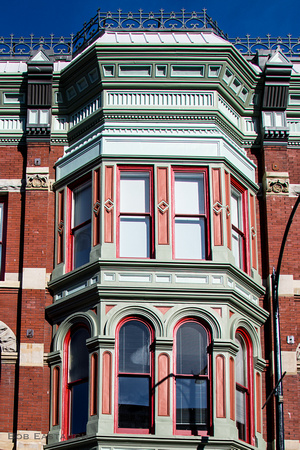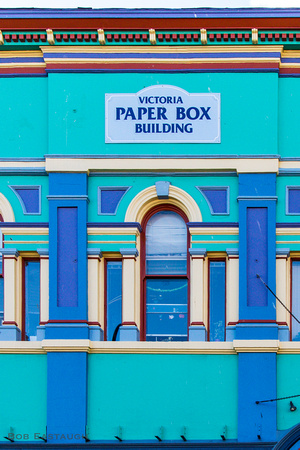Color Separations, Again, October 2018
"Color separations" implies a transition from one color to another; transitions between one thing and another, whether they are between color fields or between forms of government, are interesting. They can also be surprisingly ambiguous and conceptually hard to pin down.
Simplistically, a hard line between colors (or textures, or tonal values, etc.) results in the most abrupt, least subtle, visual transition. Consider the edge between two color fields in a Mondrian painting. But whether an edge is really "hard," or, indeed, an edge at all, may depend on viewing distance. Under magnification, what seems to be an abrupt transition may be much more nuanced.
Whether separations herald change or confirm stasis in images or human endeavors may depend on whether the element of time is an inherent factor (as in human activities such as government) or is not a factor at all (as in some art). In art, separations can illustrate artistic equivalents of Newton's three laws of motion. (More on that later.) Motion and time are not explicit elements in most two-dimensional art (ignoring movies or multi-part images moved by external forces), even though motion and time may be the subject of the art piece (consider a single static photograph of a speeding train - intended to capture the essence of velocity - or Dali-esque watch images which - of course - address time). When time's passage is actually an implicit element of the image, it may nonetheless be "depicted" in two dimensions (examples include Lascaux cave art and Eadweard Muybridge's galloping horses).
Transitions in most two-dimensional art are the result of locational propinquity - closeness - chosen by the artist for some reason.
 EF4A0197
EF4A0197
 EF4A0191
EF4A0191
 EF4A0181
EF4A0181
 EF4A0226
EF4A0226
 EF4A0233
EF4A0233
Naturally the viewer will see that the depicted objects themselves - all from Victoria, B.C. - are not two-dimensional. But that isn't the point of this post. These depictions are two dimensional.
The objects' creators no doubt had something in mind when they differentially colored the objects' three-dimensional facets. But that isn't exactly the point here, either, because here the photographer chose to record these lively objects in two dimensions and to include at least one color, the blue of the sky, the creators did not. The goal was to emphasize the color separations.
Comments


After a lifetime of mainly expressing myself with words, my postings here will mainly rely on images. They will speak for themselves to some extent, but I'll usually add a few comments of explanation. I've taken photographs for decades, since the 1950's, inspired in part by my father's photographic skill. Four years of photo assignments and quality darkroom time eventually gave way to decades of casual and family picture-taking. I re-immersed myself when I left film and turned to digital.